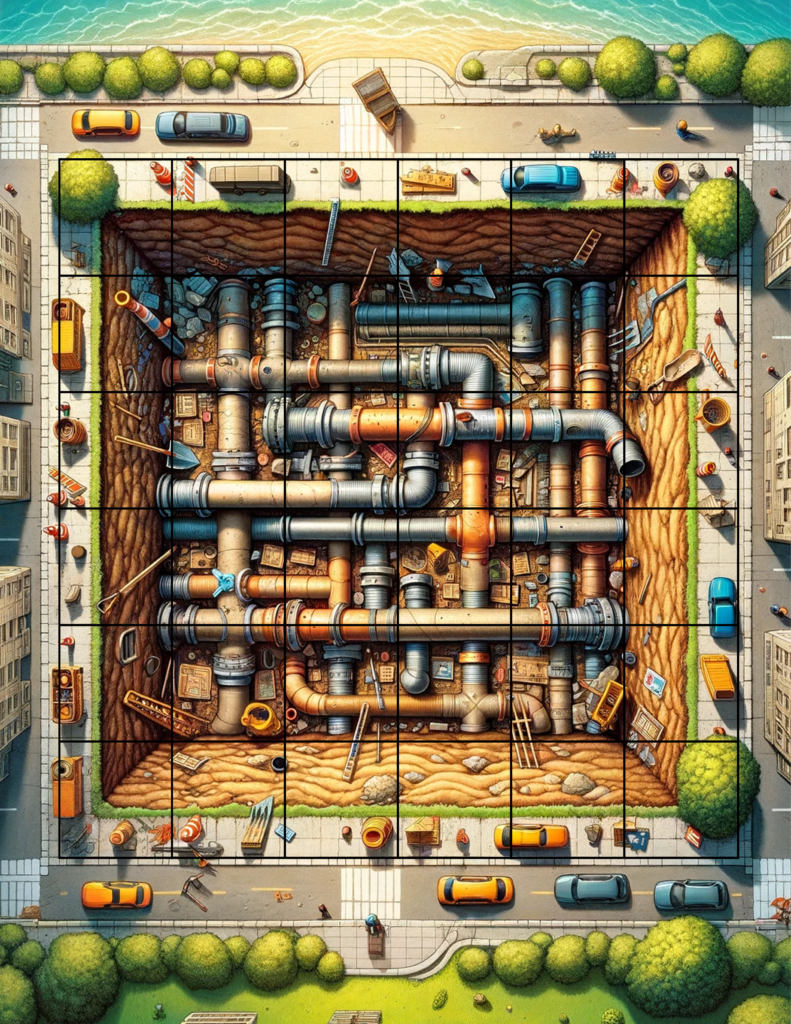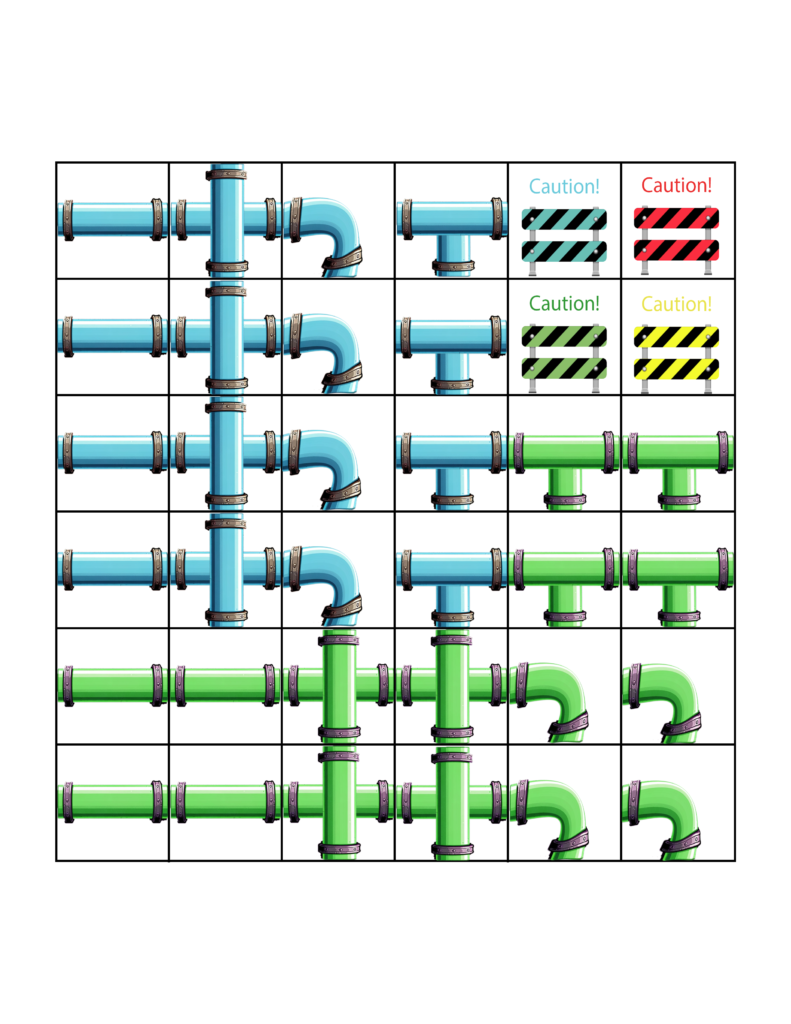We (Noah and Yiming) decided on making a turn-based tile-based board game with a certain degree of uncertainty. After getting recommendations from the MADD Center student staff (thanks Bruno!), we decided to play Tsuro and Portal: The Uncooperative Cake Acquisition Game. They both share two commonalities that we hoped to incorporate into our game: (1) individual tiles that game be pieced together and (2) uncertainty from both the game mechanics and the players.
Tsuro is a turn-based tile-based board game where players construct paths with individual tiles. And as you can see from the manual, it had fairly simple rules. Each player selects a marker, starts from a point on an edge of the board, and starts building their path. Whenever a tile is placed, the player should move their marker to the end of the path on the tile. The tiles should be connected to their previously existing tiles. If a player’s marker ends up on an edge from the path, then that player would be eliminated from the game. Whoever survives until the end wins. This made for a faster paced game and one that we were both surprised at how enjoyable it was despite it being difficult to formate a proper strategy. Photos from our first play session can be seen below.
There were several things we really liked about Tsuro:
- The uncertainty comes entirely from players, not a die. A player cannot predict what their opponents will play. As you play, it gets tricky to follow the potential paths of your opponents’ tiles to make sure you don’t accidentally eliminate yourself (and this can happen very easily if you’re not vigilant).
- The pressure increases as players play since there are less available options to place their tiles. We also want our game to increase pressure on the player as they play.
- The fact that at end game the tiles together become a bigger board gives the player a sense of accomplishment. We also want to incorporate this “building up” process in our game where you can visually see your efforts on the board.
Because of the fact that you can only place new tiles by connecting them to your existing tiles, there lacks a sense of direct competitiveness. We figured out that in Tsuro, you can compete by strategically placing your tiles such that they lead other players to their demise, but this strategy is not obvious to new players. We want to incorporate direct competitiveness in our game.
Another thing that we really liked about Tsuro was how the curves of the path made it difficult to follow (take the last photo above, for example), so even if you tried to “follow” your next path to plan ahead, it was easy to get lost in the tiles and end up making the wrong move. While our game tiles don’t have as intricate designs as Tsuro, we still wanted the difficultly of having so many connections to keep track of that the pressure builds as the game progresses.
Enter Portal: The Uncooperative Cake Acquisition Game. This game is way more complicated than Tsuro that its rule book is around 20 pages compared with Tsuro’s 1 page. We spent about 20 to 30 minutes fully understanding the rules of the game. This gave us our first takeaway: game’s rules should be simple so that players can get started quickly.
As admins of the test chambers, your goal is to collect cake slices in test chambers by putting your test subjects in them and activating them with GLaDOS. We will refrain from introducing the rules (because they are too many of them), but we like the multi-objective nature of the game: you win by either collecting all 8 slices of the cake (so I guess the cake wasn’t a lie after all), or having the most cake slices and killing all of your test subjects.
Having experienced both games, we want our players to experience competitiveness and increased intensity as the game progresses while winning the game also relies on a certain degree of uncertainty.
We started by first designing the tiles. To simplify things, Yiming first designed these 4 types of simple tiles, where they tile by connecting the green lines on them.
Each player gets their own piles of tiles, and when tiles of different players connect, they can contest each other’s tile, and replace that tile if they win. We decided that deciding the winner by a die roll is a great way to introduce an appropriate amount of uncertainty. A more detailed explanation of the game is included in the rule book.
The goal of the players is to connect uninterrupted paths (or flow in our official rule book) from their side of the edge to an opponent’s edge. A player wins by connecting 2 paths. This is where we introduce direct competitiveness. As players’ tiles connect, they need to contest each other to push their tiles towards their opponent’s edge, but the result of the contest relies on rolling a die, which no one is certain about. This leads to really fun “contest” battles later on in the game, and can flip the scoreboard in one move if played right.
After our first prototype play test, we made some modifications to the rules, like finalizing the win conditions, figuring our how to properly use “block” cards, including a new “contested” piece to keep track of contested tiles (late game this is definitely needed), deciding to color-code cards for each player, and including rules on how to play with 3 or 4 people. Finally, we felt like we had a really solid game and it was more enjoyable that we imagined for our first play through.
Using our long list of amends, we got to work on creating the handbook and stylizing our game. We had a “water/underground pipe” theme going on so we decided to run with it and it worked pretty well with our game. When creating our handbook, we really looked towards Tsuro again and really wanted to emphasis accessibility and ease of understanding the rules so it would be playable for anyone and easy to learn (unlike portal *cough cough*). However, because I (Noah) have a obsession with trying to learn every Adobe program I can, I decided to go overboard on InDesign and created a physical/decorated handbook, and spent too much time on creating the board and accompanying pieces. However, we’d argue that the time we spent on the design helps make the game more intuitive and easy to approach. Below are PDFS/images of the handbook and board game/example pieces, as well as some final play test photos.




